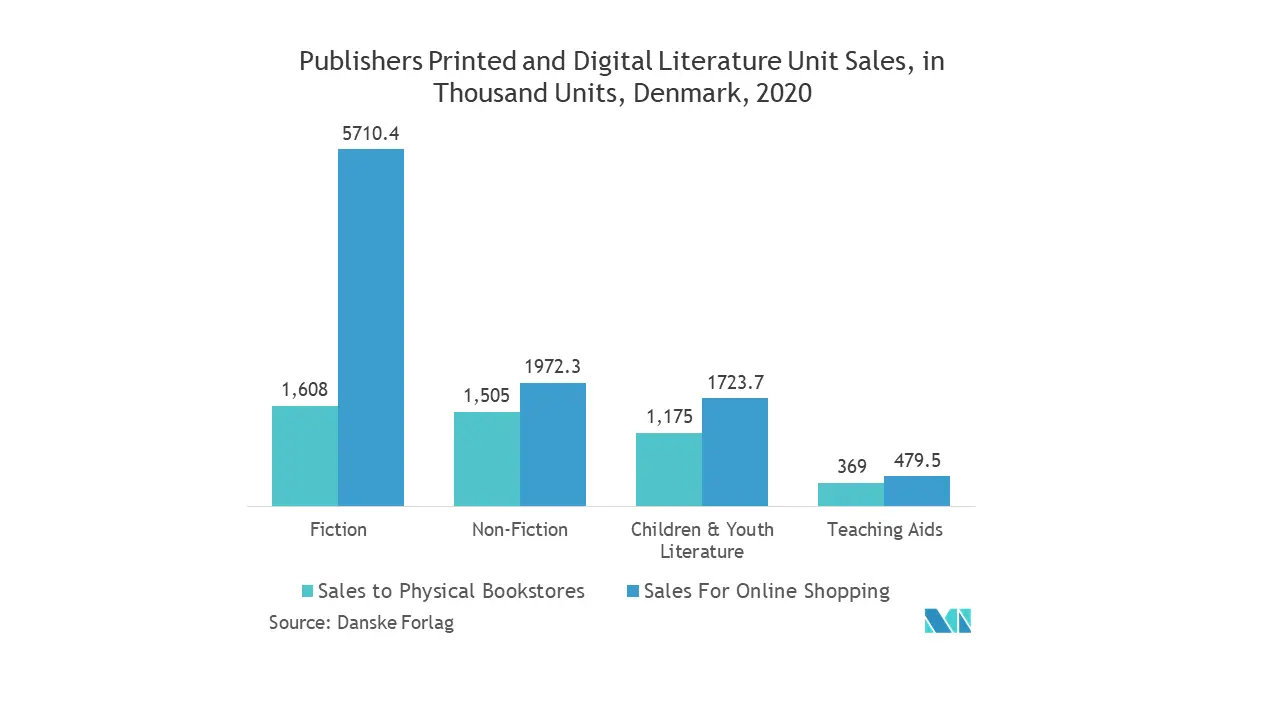Market Trends of Nordic Commercial Printing Industry
This section covers the major market trends shaping the Nordic Commercial Printing Market according to our research experts:
Digital Printing is Expected to Grow Significantly
- Digital printing has been making the segment evolve apart from the traditional use of renewable resources to improving print accuracy and significantly reducing emissions and wastage. With a rising concern among the printing companies and overall goal to meet the sustainability goals, they are reducing their carbon footprint.
- Digital printing differs from traditional printing methods such as offset printing as they do not require printing plates. Instead of using metal plates to transfer an image, digital printing presses print the image directly onto the media substrate which results in producing on-demand and short print runs quickly and cost-effectively.
- The Drop-on-demand (DOD) technology is further sub-divided into thermal DOD and piezoelectric DOD. Most consumer inkjet printers use the thermal inkjet process. Inkjet printing uses thermal excitation to move the tiny drops of ink onto the substrates. Most commercial and industrial inkjet printers, along with some consumer printers, use a piezoelectric material that is excited by the application of a voltage to ensure a continuous flow of ink. When the voltage is applied, the shape of the piezoelectric material changes, generating a pressure pulse in the fluid that forces a droplet of ink from the nozzle.
- The significant advantage of using inkjets is due to its capability to produce short runs and unique products effectively. Commercial printing is being driven by the growth of online ordering and specification by using web-to-print technology. The ability of inkjets in the production of short runs and one-off products has reinforced their role as a critical enabler in such an ecosystem.
- These advantages associated with the digital printing is encouraging various printing houses to adopt new digital printing technologies for fast turnarounds and to attract new customers. For instance, in January 2021, Auraprint, one of the major printing houses in Finland announced that it has installed HP 6K digital printing press which offers different inks including silver, white, yellow, and blue, and others.
- Similarly, in May 2021, Vogue Scandinavia announced the launch of a global edition of the magazine on its digital flagship store. The move helps the company reducing the production costs and packaging costs of magazines. Such trends further affect the market.

Revenue from the Newspaper Printing is Expected to Follow the Downward Trend
- Due to high circulation and extensive readerships, the Nordic region has been characterized as a newspaper region. According to Nordicom, the overall number of newspapers in the region is stable; however; the number of titles in Norway has been experiencing a continuous decline since 2000 due to digitization and globalization rapidly taking place and changing the media landscape and use, challenging the strong position of newspapers in the Nordic countries.
- According to Nordic Information Centre for Media and Communication Research or NORDICOM, the daily reach of online newspapers in Sweden increased from 48% in 2019 to 55% in 2020. This highlights the demand for and the growth in the usage of online alternatives to print news publications.
- The newspaper printing companies are also actively looking forward to making strategic mergers and acquisitions to gain market share. For instance, in May 2020, Sanoma Media Finland announced the acquisition of Alma Media's regional news media business by investing over USD 125 million for printing services provider Alma Manu Oy. The company has over 185,000 subscribers, with only 15% of digital copy subscribers.


